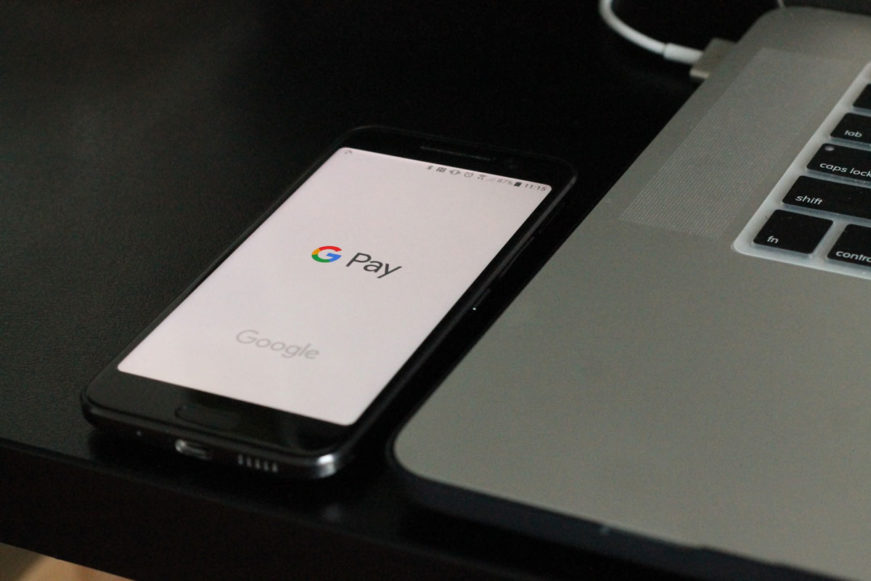There are many online payment solutions out there for e-commerce merchants hoping to provide versatile payment options to their customers. One of the more recent launches in this space, particularly in New Zealand, is Google Pay.
So what is Google Pay? Is it right for your e-commerce store? Let’s discuss.
What is Google Pay?
Google Pay is a broad name for two services – for customers it’s a digital wallet. For merchants, it’s an online payment system that can be set up either in-store (with the right technology), on your e-commerce website, or even in your apps.
If you’ve heard of Android Pay or Google Wallet, know that these two apps were merged into a unified Google Pay back in 2018. Except the app didn’t actually work in NZ until the end of 2018, when Google and Paymark (one of the country’s leading electronic payment companies) teamed up to bring Google Pay to local merchants.
Now businesses across the country are able to integrate the app into their website, or offer use of the service in-store via contactless payment technology (aka NFC systems, such as Visa payWave).
How does Google Pay work?
Google Pay is a means for consumers to pay for goods and services both in-store and online without needing to have a card present. Users load their favourite payment method into the app and can then either scan their phone in-store via NFC, or click the Google Pay icon online or in-app to instantly pay without the hassle of entering their payment or shipping details.
What payment methods do Kiwi users have available to them?
- Credit and debit cards
- PayPal
- Gift cards and promo codes
Google Pay for businesses
Customers want two things from NZ’s retailers: Convenience, and choice.
They want purchasing things online to be swift and modern – the experience they get from big overseas brands, such as Amazon.
Then, they want to be able to choose the online payment method that works for them. 49% of Gen Z-ers (according to a Laybuy survey) have never owned a credit card, for example, and therefore might be restricted on what they can purchase online.
What this means for you as a merchant is that your e-store needs to be able to offer a variety of payment options so not to turn some customers away.
Google Pay is one such service. If users log on to your site, add items to their shopping cart and then see a raft of payment options – online banking through services such as POLi, credit card payments with a traditional online payment gateway, and a Google Pay icon if they’re Android or Chrome users – they will select the one that suits them best.
Integration via the Google Pay API is very simple, which you can learn more about in the video below.
So customer details are forwarded from Google to the merchant?
Sort of. When a user adds a card to Google Pay, their credit card information is “tokenised”, which Google then encrypts. A token is a virtual account number that represents the cardholder’s details. Tokens help ensure account security because the ‘real’ credit card number isn’t being shared.
When customers make a purchase on your store, your system is sent the tokenised information and a cryptogram (a sort of one-time-use password). The card network validates the password, then matches the token with the customer’s actual credit card number. From here, your business’ bank and the card issuer decrypt the billing information and complete the transaction.
Google doesn’t process or authorise the transaction itself. It just acts as an intermediary, tokenising cards and passing the tokens to credit card networks. You the merchant are still the seller, and must manage your orders through your current payment processing system.
How much does Google Pay cost for merchants?
Google Pay is one of the more inexpensive online payment systems available to merchants.
In itself Google Pay is one of the more inexpensive online payment systems available to merchants. This is because there are no setup fees, transaction fees or monthly charges (although you will of course incur IT fees if you need help integrating the API), whereas most online payment gateways – e.g. Flo2Cash, Bambora – will charge a one-off startup fee and sometimes also a monthly fee.
This is largely because Google Pay is itself not processing the transaction, but rather storing and transmitting encrypted information at the convenience of its users.
Note, however, that the credit card linked to the Google Pay account will still charge its usual fee.
Google Pay vs. POLi vs. payment gateways
Given Google Pay is free and other services charge fees, it might sound like it’s the only app you need. However, remember that the core lesson of this article is that customers want and need variety. Therefore, only offering Google Pay (or Apple Pay) restricts customers who do not have an account.
Why you would offer POLi
POLiPay lets your customers pay for their goods with a trusted source – their online banking account. All they have to do is hit the checkout button on your website, log in to their bank via the POLi portal, then select which from account they wish to make their purchase.
POLi also has some of the lowest fees in the country:
- Setup fee: $0
- Monthly fee: None, although there is a $10 minimum account activity fee, which is only charged if the sum of your transaction fees is less than $10
- Transaction fees: 1%, capped at $3 per transaction
Why you would offer a payment gateway
Online payment gateways facilitate payments between a user, your store, the user’s bank, your bank, and the credit card companies. Common Kiwi gateways include Flo2Cash, Paystation by TradeMe, and Windcave.
Payment gateways enable customers to pay online using their credit or debit card, but without the need to use Google Pay as an intermediary. You’d offer this service so customers without Google Pay can still use their card on your store.
Fees vary greatly between providers.

Which credit cards does Google Pay work with in NZ?
Currently, Google Pay only works with three local banks and even then only some of their credit cards. That’s because the banks choose which of their cards will work with Google Pay, and restrict certain choices from making mobile payments.
The banks available to your Google Pay customers at the moment are:
- ANZ
- BNZ
- ASB
To see the specific range of credit cards that are and aren’t accepted, check out Google’s New Zealand payment methods page.
Is Google Pay secure?
Google Pay is considered a secure app. The use of encrypted virtual credit card numbers helps protect sensitive customer information even when it’s being used to make online purchases.
While this is not as relevant for merchants, it may make you feel more comfortable to also know that Google Pay sometimes deletes customers’ credit cards from its own app if they have been inactive for 90 days, or the phone has been turned off or lost. So you wouldn’t be encouraging the use of a dangerous app by installing it on your website.
Google Pay vs. Apple Pay vs. Samsung Pay
Where things get even more confusing is the fact that there are multiple apps with similar names from big brands offering much the same product.
Currently, the big three mobile wallets competing for consumers’ attention are Google Pay, Apple Pay and Samsung Pay.
The only digital wallets Kiwi e-commerce merchants need to worry about right now are Google and Apple Pay.
Are they that different?
From your perspective as an e-commerce merchant, Apple Pay and Google Pay will be the ones you encounter most frequently. Samsung Pay can’t currently offer users in-app or online purchases, ruling it out as an online payment solution. But from an ‘are they different’ perspective, Apple and Google offer a similar product for their respective iOS or Android users.
If you’re going to integrate one into your payment processing system, it would be wise to consider installing both. Again, this way you are offering customers the ability to make their own decisions when it comes to payment method.
Conclusion
Google Pay is a highly convenient, secure app for consumers to use, and therefore a must-install for any growing e-commerce business in New Zealand. It stores encrypted “tokenised” payment information on behalf of the user, letting them pay for goods by either scanning their phone in-store or simply pressing a button online.
As a merchant, Google Pay is a way to further round out your available online payment options. While it might be tempting to use it on its own, it is best thought of as one tool in your wider toolbelt. By offering Google Pay alongside Apple Pay and traditional payment gateways (e.g. POLi or Paystation), your customers will have the freedom to choose the method of payment that best suits their needs.
